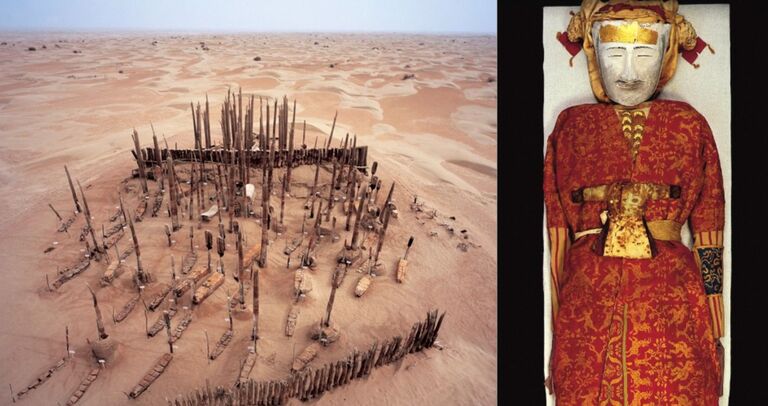Ancient Tribe Frozen In Time Gets A DNA Test That Finally Unveils Their True Identity
In two Chinese laboratories, hundreds of miles apart, researchers are carefully studying samples of ancient DNA. Extracted from mummies thousands of years old, these genomes hold the key to a riddle that’s puzzled experts for generations. Who were these mysterious people? And where did they come from? In the end, the answer turns out to be one that nobody expected.
Graves in the Taklamakan Desert
For years, experts have speculated over the identity of the mummies unearthed in the Xiaohe cemetery, a series of burial sites in China’s Taklamakan Desert. With their atypical physical appearances and clothes, they didn’t seem to be native to the area — so how had they ended up in these parched graves?
Migrants from the west?
Were the Xiaohe mummies remnants of a civilization that’d migrated from the west, introducing a new way of life that soon spread across China? Or were they natives of this desert land, with a different story to tell? Now, scientists have revealed the results of a genetic study that resolves the issue once and for all.
The Tarim Basin
Today, the Tarim Basin, home to the Taklamakan Desert, is a bleak and unforgiving terrain. Located in Northwest China, it covers an area of almost 400,000 square miles, stretching from the Tibetan Plateau in the south to the Tian Shan mountains in the north. And with some parts seeing just 0.4 inches of rain every year, it’s a far from hospitable place.
Ancient communities
In fact, standing in the middle of the Taklamakan Desert, you’re about as far away from the planet’s seas as it’s possible to get. But this doesn’t mean that the Tarim Basin’s always been dry and devoid of life. Thousands of years ago, experts believe, the region was crisscrossed by rivers that supported a network of ancient communities.

